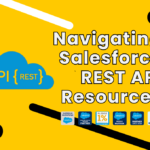Salesforce Hyperforce is a groundbreaking infrastructure architecture by Salesforce that revolutionizes the platform to offer a secure and consistent Salesforce Customer 360 experience. This innovative approach is designed to provide enhanced scalability, security, and flexibility for users globally, allowing them to securely deploy Salesforce apps and services from anywhere using the scale and agility of the public cloud. Hyperforce prioritizes built-in trust through a security architecture that limits user access to customer data appropriately and includes encryption for data privacy and security.
Concept of Salesforce Hyperforce
Salesforce Hyperforce is Salesforce’s updated infrastructure architecture which is only available in Australia, Brazil, Canada, France, Germany, India, Indonesia, Italy, Japan, Singapore, South Korea, Sweden, Switzerland, United Arab Emirates (UAE), United Kingdom, and United States (US), it is designed for the consumption of public cloud services. It offers customers a more powerful and easily scalable platform by leveraging public cloud resources, allowing organizations to run their Salesforce instances on a public cloud infrastructure of their choice. This architecture shift provides benefits such as the ability to choose where to migrate an organization, ensuring infrastructure scalability, enhanced data security, privacy control, and agility in software development and application performance.
Overview of Salesforce Hyperforce key Features
- Hypercompliant: This feature emphasizes the ability to store data locally to comply with various regulations applicable to different regions, industries, or companies. It is particularly relevant for highly regulated sectors such as the public sector, where data compliance is crucial.
- Hyperscalable: This feature highlights the flexibility and agility of Hyperforce’s infrastructure. It allows for quick scaling of compute capacity as needed, enabling resources to be deployed in the public cloud efficiently. The elasticity is driven by the user, providing a scalable solution tailored to evolving business needs.
- Hypersecure: Emphasizing the importance of security, Hyperforce offers built-in trust to protect sensitive data. It ensures the privacy and security of data in the background, allowing organizations to focus on innovation without compromising on security measures.
- Hypercompatible: This feature assures users that existing Salesforce apps, customizations, and integrations will run seamlessly on Hyperforce without disruptions. It emphasizes backward compatibility, ensuring that organizations can transition to Hyperforce without concerns about compatibility issues with their existing Salesforce ecosystem.
Key Advantages of Hyperforce for Your Business:
- Better Performance: Hyperforce ensures smooth operations for both large (B2B) and small (B2C) businesses, enhancing productivity and efficiency. It is like having a powerful tool that speeds up work with ease, offering flexibility to adjust as needed.
- Trustworthy Security: Hyperforce is like a security guard for your data, keeping it safe from unauthorized access. Just as you would hide your diary under your mattress, Hyperforce ensures your data stays secure, whether it is still or moving.
- Pick Your Own Storage Spot: Choose where your data lives with Hyperforce, just like finding the perfect home for your pet. It ensures compliance with different laws worldwide, making business easier.
- No More Compatibility Headaches: Hyperforce integrates smoothly with your existing tools, like adding a new friend to your old group. All your apps, customizations, and connections work seamlessly without any compatibility issues.
- Enhanced Flexibility: Hyperforce offers the ability to scale resources up or down based on your business needs, providing a tailored solution. This flexibility allows your business to adapt quickly to changes, ensuring continuous optimal performance.
Key Considerations of Salesforce Hyperforce :
- Limited Availability: It is currently only available in: Australia, Brazil, Canada, France, Germany, India, Indonesia, Italy, Japan, Singapore, South Korea, Sweden, Switzerland, United Arab Emirates (UAE), United Kingdom, and United States (US). Businesses outside these regions may not be able to leverage Hyperforce yet, which can limit its immediate applicability.
- Data residency: Hyperforce does not currently offer data residency in all regions. This can be a challenge for companies with international operations or strict data compliance requirements.
- Migration quirks: Migrating to Hyperforce can cause some temporary issues, like problems with Einstein functionality, bots malfunctioning, and glitches with specific managed packages.
- Technical considerations: There are technical aspects that require additional work compared to a traditional Salesforce deployment. These include managing endpoints and limitations with SVG file previews.
Conclusion
Salesforce Hyperforce it is especially important to understand that Hyperforce does not surpass the current Salesforce infrastructure; instead, it presents an additional option for running Salesforce instances in the public cloud. Its focus on scalability, security, and flexibility empowers businesses to adapt and grow efficiently. Overall, Hyperforce signifies Salesforce’s commitment to modernizing infrastructure and meeting evolving business needs effectively.



